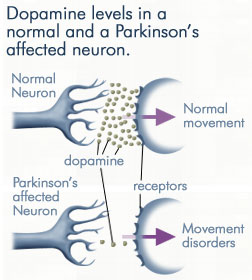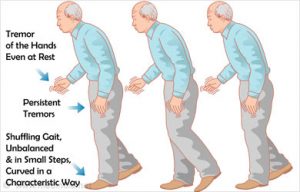A complete guide to Parkinson’s Disease for first aiders
What is Parkinson’s Disease?
Parkinson’s disease is a chronic, progressive disorder of the central nervous system that belongs to a group of conditions called motor system disorders.
Parkinson’s is the direct result of the loss of cells in a section of the brain called the substantia nigra. Those cells produce dopamine, a chemical messenger responsible for transmitting signals within the brain.
Loss of dopamine causes critical nerve cells in the brain, or neurons, to fire out of control, leaving patients unable to direct or control their movement in a normal manner. When approximately 80 per cent of the dopamine producing cells are damaged, the symptoms of Parkinson’s disease appear. It is named after Dr James Parkinson (1755- 1824), the London doctor who first identified Parkinson’s as a specific condition.
What are the common signs and symptoms?
About 70 per cent of people with Parkinson’s have a tremor. The tremor usually begins in one hand or arm and is more likely to occur when the part of the body affected is at rest. Tremor will usually decrease or disappear when the affected part is being used and often becomes more noticeable when a person with Parkinson’s is anxious or excited.
Muscular rigidity or stiffness is a common early sign in untreated people with Parkinson’s. People may experience problems turning round, getting out of chair, turning over in bed, or making fine finger movements, such as fastening a button, because of rigidity. Some people find their posture becomes stooped, or that their face becomes stiff, making facial expressions more difficult.
Stiffness can affect many everyday tasks and can sometimes be quite painful.
Bradykinesia means slowness of movement. People with Parkinson’s often find that initiating movements becomes more difficult or that it takes them longer to perform movements. Lack of co-ordination when making movements can also be a problem.
Other signs of Parkinson disease may include:
- Small, cramped handwriting
- Stiff facial expression
- Shuffling walk
- Muffled speech
- Depression
Conditions that produce these symptoms are known collectively as parkinsonism. Parkinson’s is the most common form of parkinsonism and is often referred to as “idiopathic Parkinson’s disease” (this means of unknown cause).
Other, less common, forms of parkinsonism include multiple system atrophy (MSA), progressive supranuclear palsy (PSP), also of unknown cause, and drug-induced parkinsonism.
The symptoms of Parkinson’s usually begin slowly, develop gradually and in no particular order. It is important to remember that everyone with Parkinson’s is very different and may have a different collection of symptoms and response to treatment from another person with Parkinson’s.
The nature and severity of symptoms and the rate at which the condition progresses will also be individual. The symptoms may take years to progress to a point where they cause major problems and when they do, many of these symptoms can be treated.
What treatments are available for Parkinson’s Disease?
There is no cure for Parkinson’s disease. Drugs have been developed that can help patients manage many of the symptoms; they do not stop the disease from progressing, however. Parkinson’s patients frequently experience dramatic swings in mobility and mood (known as being “on” or “off ”), which may depend on the severity of their disease or the timing of their medication doses.
Unfortunately, all drugs used to treat Parkinson’s disease may have side effects. Although some people never experience such side effects, others are very sensitive to the medications and may be unable to tolerate them. Most commonly, the side effects of “antiparkinsonian” drugs are mental confusion, hallucinations, and dyskinesia.
Effective treatment of Parkinson’s disease is often a matter of balancing beneficial effects of drugs against their side effects.








My wife was diagnosed of Parkinsons Disease at age 59. She had severe calf pain, muscle pain, tremors, slurred speech, frequent falls, loss of balance, difficulty in getting up from sitting position. She was put on Senemet for 6 months and then Siferol was introduced and replaced the Senemet. During this time span she was also diagnosed with dementia. She started having hallucinations, lost touch with reality.
This year, our family doctor started her on NewLife Clinic Parkinsons Disease Herbal mixture, 1 month into treatment she improved dramatically. At the end of the full treatment course, the disease is totally under control. No case of dementia, hallucination, weakness, muscle pain or tremors.
David Craven